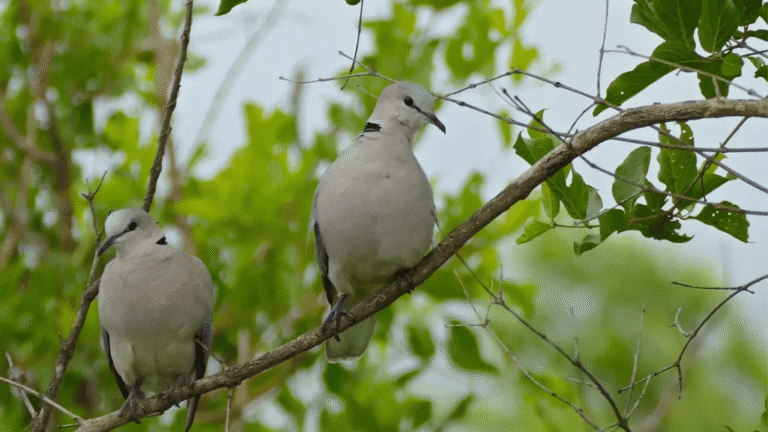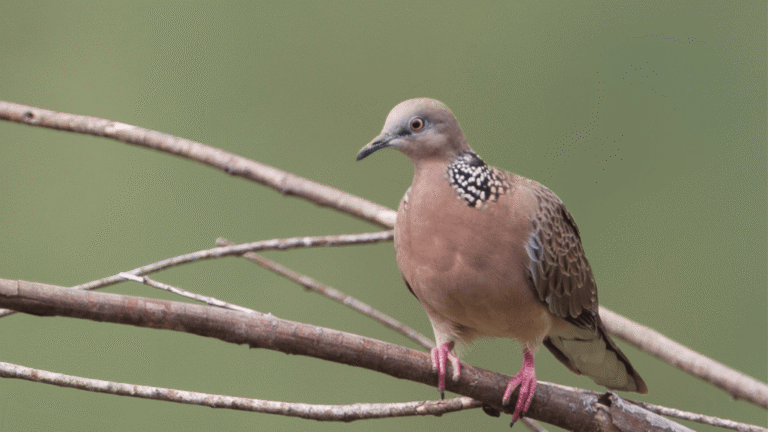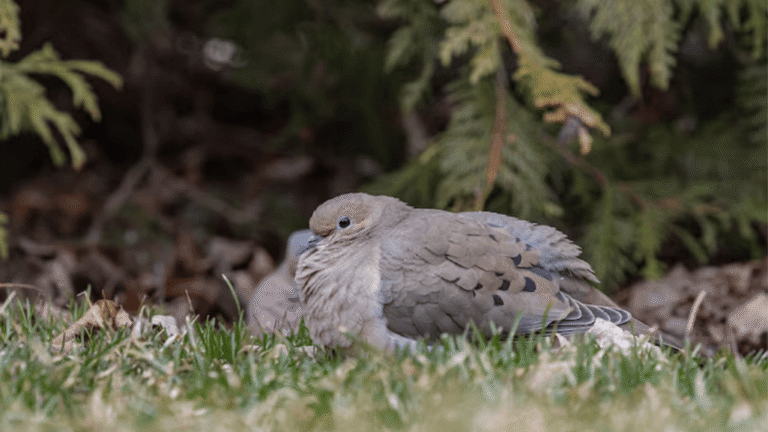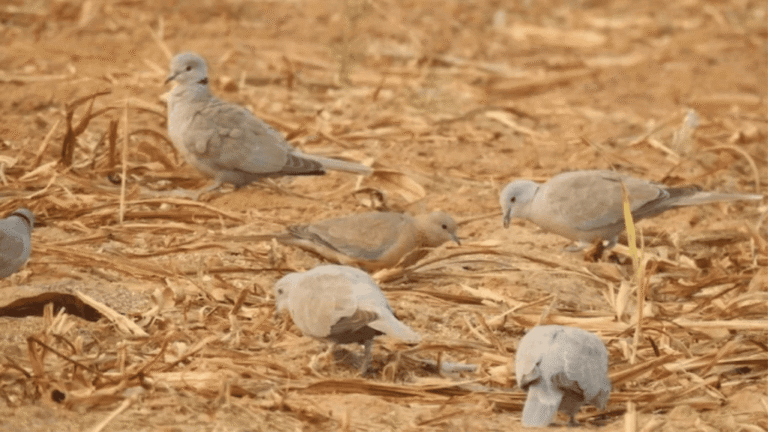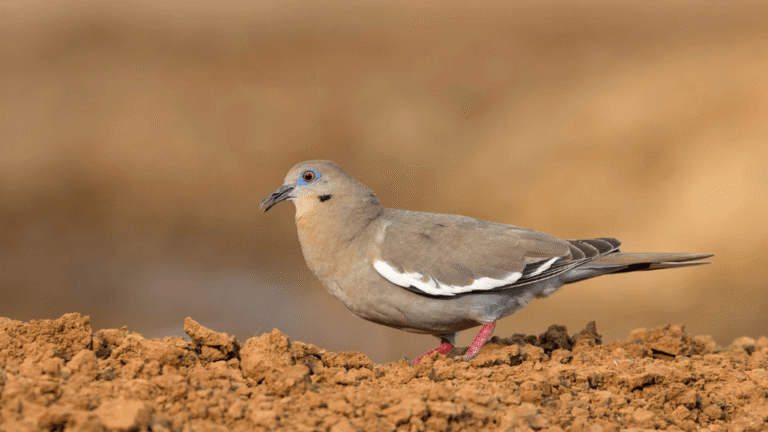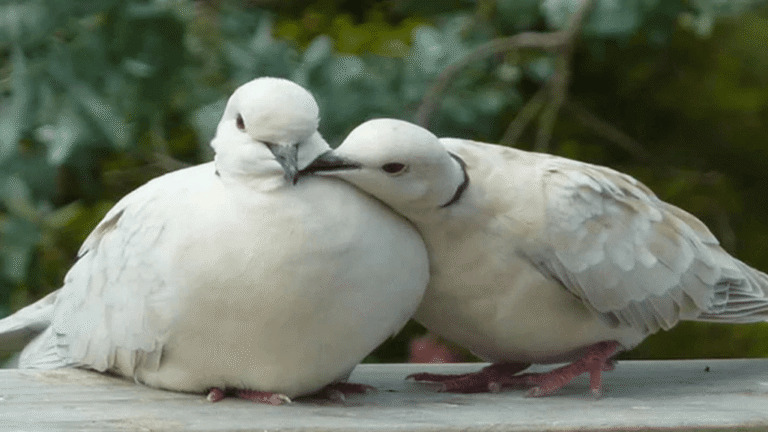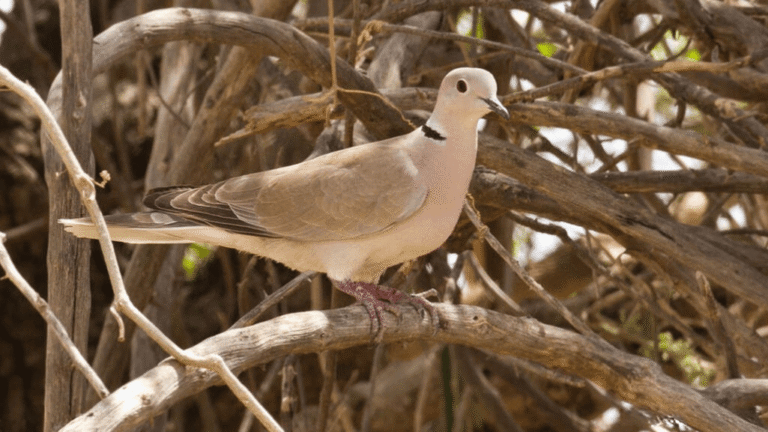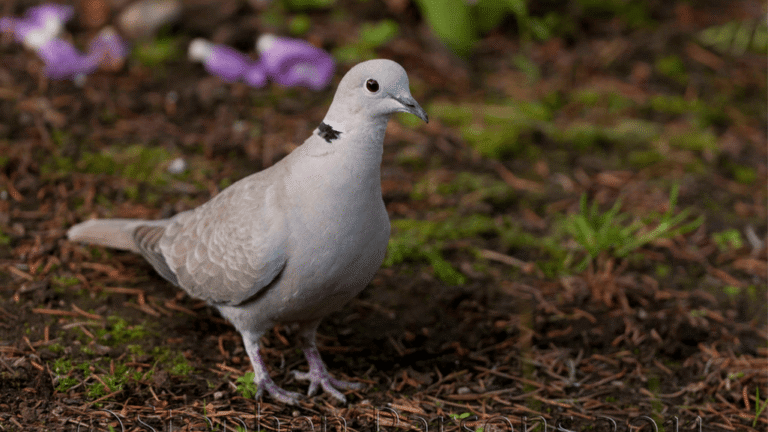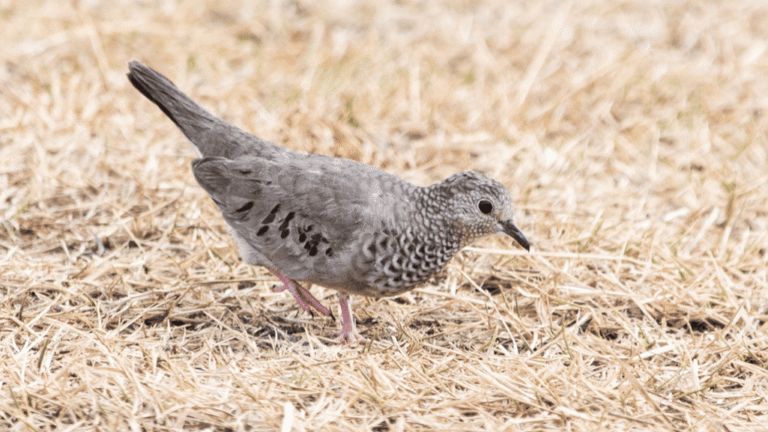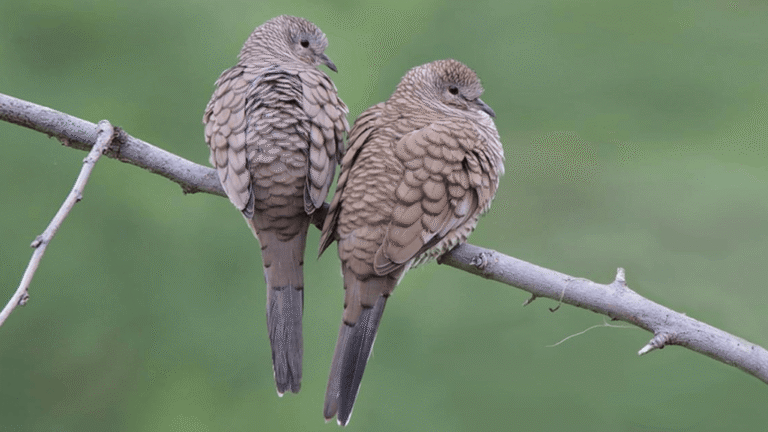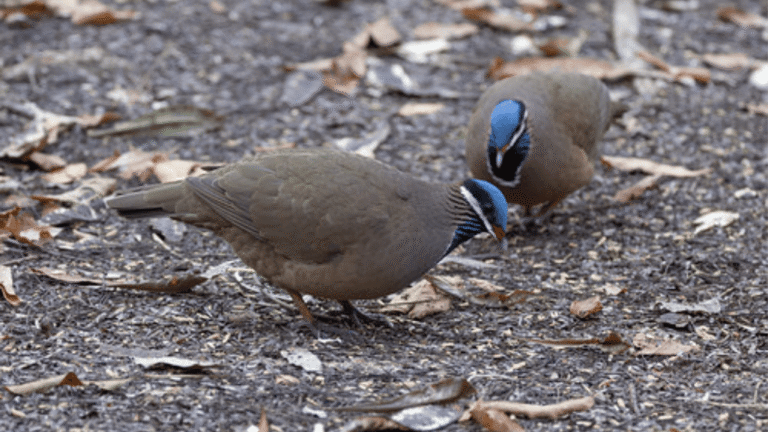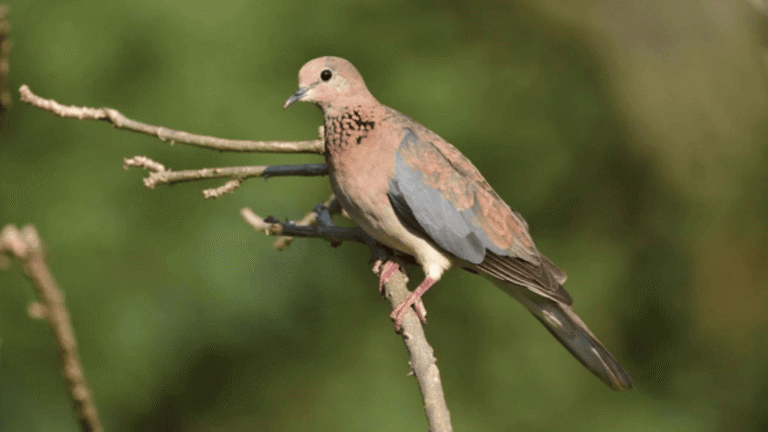The Mourning Dove (Zenaida macroura) is a familiar and graceful bird across much of North America. A member of the Columbidae family, this dove thrives in a wide range of settings — from city parks to open desert — making it one of the easiest birds for nature lovers to spot.
Their soft coo is unmistakable and can be mistaken for an owl’s call at a distance. With a plump body, long tail, and distinctive wing spots, the mourning dove stands out in yards and wildlands alike. You’ll commonly find these birds from southern Canada through the United States and into Mexico.
Key Takeaways
Mourning doves are widespread across North America
They belong to the Columbidae family
Their distinctive cooing call is easily recognized
These birds adapt well to diverse habitats
Mourning doves are popular with backyard birders and wildlife watchers
Look for long tails and spotted wings as key ID features
Introduction to the Mourning Dove
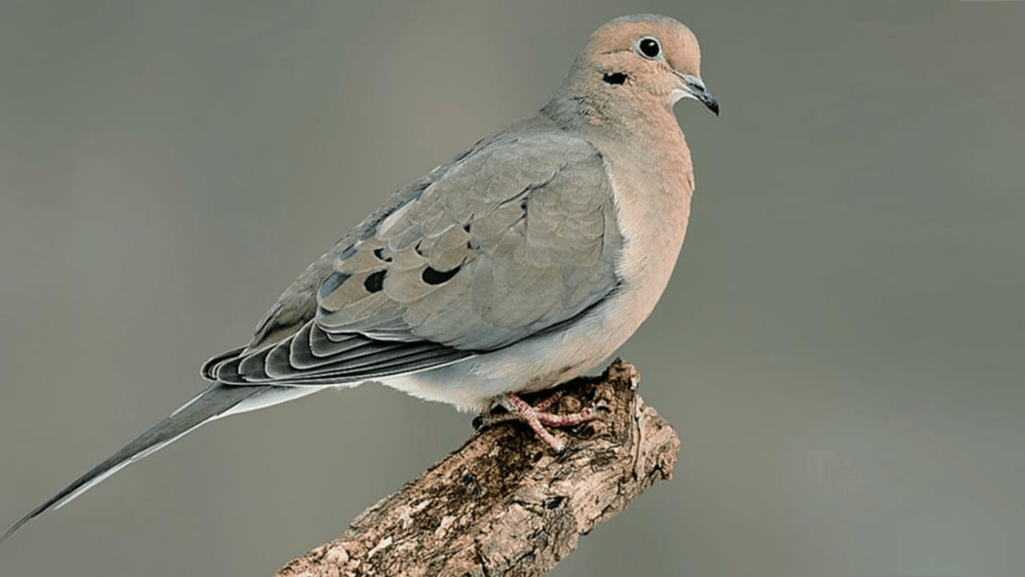 The Mourning Dove is a gentle, wide-ranging bird of North America noted for its soft, mournful coo and graceful profile. Its scientific name is Zenaida macroura, and as a member of the family Columbidae it is closely related to pigeons and other doves. Because of its broad distribution and familiar presence in towns, farms, and wildlands, the mourning dove is an important and well-known species in American wildlife.
The Mourning Dove is a gentle, wide-ranging bird of North America noted for its soft, mournful coo and graceful profile. Its scientific name is Zenaida macroura, and as a member of the family Columbidae it is closely related to pigeons and other doves. Because of its broad distribution and familiar presence in towns, farms, and wildlands, the mourning dove is an important and well-known species in American wildlife.
Scientific Classification and Family
The Mourning Dove belongs to the family Columbidae, which includes pigeons and other doves. These birds typically have slender bodies, small heads, and a smooth, streamlined shape. Adult mourning doves are roughly 11–13 inches long (about 28–33 cm) and commonly weigh around 3.5–5.5 ounces (roughly 100–155 g), making them slightly smaller than a typical rock pigeon.
Distribution across North America
Mourning doves occur across much of North America: from southern Canada through the continental United States and into Mexico. Some populations migrate seasonally — northern birds move south for winter and can reach the Caribbean and parts of Central America — while southern populations may remain year‑round. Their broad range and adaptability to human-altered landscapes make them one of the most commonly observed birds across this region.
Significance in American Wildlife
Mourning doves play a notable role in North American ecosystems and culture. They are among the most-harvested game birds in the United States, yet strong reproductive rates and wide distribution have kept overall populations robust (see conservation sections for sources and regional trends). A single pair can produce multiple broods per year in warm regions, which helps sustain their numbers despite hunting pressure.
Beyond their ecological role, mourning doves hold cultural meaning for many people: their cooing is often associated with peace, love, and comfort, and the species is frequently featured in art, literature, and spiritual traditions across North America.
Physical Characteristics of Mourning Doves
 Mourning doves are fairly large for backyard birds but remain sleeker and more streamlined than a rock pigeon. Their overall shape — a plump body with a long, pointed tail — makes them easy to identify at rest and in flight.
Mourning doves are fairly large for backyard birds but remain sleeker and more streamlined than a rock pigeon. Their overall shape — a plump body with a long, pointed tail — makes them easy to identify at rest and in flight.
The plumage is mainly soft brown and buff with subtle pinkish tones on the breast. Look for small black spots on the wings and distinct white edges on the outer tail feathers, which are obvious in flight. Males and females are similar in appearance, though males may show slightly warmer, pinker tones on the breast.
Juveniles resemble adults but often show buffy or white-tipped wing feathers and faint streaking on the face and neck.
Feature Measurement
Length 22.5 to 36.0 cm (8.9 to 14.2 inches)
Wingspan 40 to 45 cm (15.7 to 17.7 inches)
Weight 96 to 170 g (3.4 to 6.0 ounces)
Field ID tips: watch the silhouette in flight — long, pointed tail with white outer corners and fast, direct wingbeats; listen for the soft coo to confirm the visual ID.
Photo note: include a clear adult-in-flight image showing white tail edges and wing spots for quick comparison.
Unique Behaviors and Adaptations
Mourning doves display several behaviors and physical adaptations that help them survive, reproduce, and communicate across varied habitats.
Distinctive Cooing Sound
The soft, mournful coo is a hallmark of the species and a useful field cue. Males produce a low, rhythmic coo during courtship by inflating and vibrating the throat without opening the bill widely—an efficient vocal display used to attract mates and hold territory. If you’re birding, learning this coo can quickly confirm a mourning dove’s presence even before you see the bird.
Wing‑whistling Alarm System
When startled into flight, mourning doves often produce a sharp whistling sound from their wings. This wing whistle serves as an alarm signal that can alert nearby birds to danger and may help the dove escape predators by drawing attention to its sudden flight. Tip: if you hear a high-pitched whistle and see a long-tailed silhouette, look for a mourning dove.
Efficient Feeding Habits
Mourning doves are specialized seed eaters and use a crop—a flexible pouch in the throat—to store and soften seeds. They frequently feed on the ground and can consume a large proportion of their body weight in seeds daily to meet energetic needs. Typical daily intake ranges broadly (often cited as roughly 12–20% of body mass) depending on season and activity; many sources estimate their energy needs at around 70 calories per day for an average adult. These figures vary by region and individual condition, so cite local studies for precise values.
Feeding Habit Description Significance
Diet Composition Primarily seeds (grasses, grains, weed seeds) Highly specialized granivores
Daily Consumption ~12–20% of body weight (varies) Supports high reproductive output
Caloric Intake ~70–75 kcal/day (approx.) Meets metabolic needs
Male Behavior in Courtship
Males are territorial during courtship displays and will defend favored perches and display sites. Their courtship flights and calls help establish pair bonds; once paired, many mourning doves remain as long-term mates.
Practical tip: When monitoring or identifying mourning doves, record both the visual cues (long tail, wing spots) and audio cues (coo and wing whistle). A brief audio recording can be a valuable confirmation for later identification.
Habitat and Range
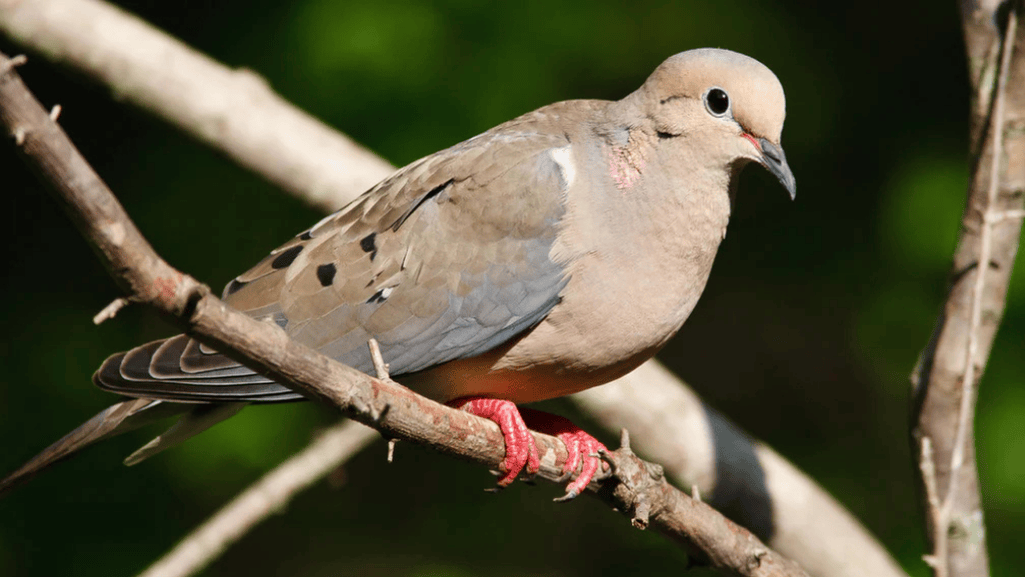 Mourning doves occupy a broad range across North America and are most common where open habitat meets human development. You’ll find them in farmlands, grasslands, parks, suburban yards, and other open or semi-open areas rather than in dense forest. Their preference for edges and open ground makes them frequent visitors to bird feeders and roadside fields.
Mourning doves occupy a broad range across North America and are most common where open habitat meets human development. You’ll find them in farmlands, grasslands, parks, suburban yards, and other open or semi-open areas rather than in dense forest. Their preference for edges and open ground makes them frequent visitors to bird feeders and roadside fields.
Geographic distribution for this species extends from southern Canada through the continental United States and into Mexico and parts of Central America. Populations also occur in the West Indies. Northern populations are more likely to migrate south for winter, while many southern and island populations remain year‑round.
Drinking and desert tolerance
Mourning doves drink by suction—a relatively uncommon method among birds—which allows them to take quick, efficient drinks without tipping their heads back. This adaptation helps them persist in arid regions, including southwestern deserts, and enables some individuals to tolerate slightly brackish water when fresh sources are scarce.
Subspecies Distribution
Zenaida macroura marginella Western Canada, western U.S., south‑central Mexico
Zenaida macroura carolinensis Eastern Canada, eastern U.S., Bermuda, Bahamas
Zenaida macroura macroura Cuba, Hispaniola, Puerto Rico, Jamaica
Zenaida macroura clarionensis Clarion Island (off west Mexico)
Zenaida macroura turturilla Costa Rica, western Panama
Seasonal movements and breeding
In northern parts of the range, mourning doves migrate to warmer areas for winter. Breeding frequency varies by latitude: birds in warm, productive regions can produce more broods per year than those in cooler areas. In the warmest parts of their range, pairs may raise several broods annually, while northern pairs typically have fewer.
Photo note: include a range map and a habitat photo (open field/edge) to illustrate typical sites where mourning doves are seen.
Mourning Dove Nesting Habits
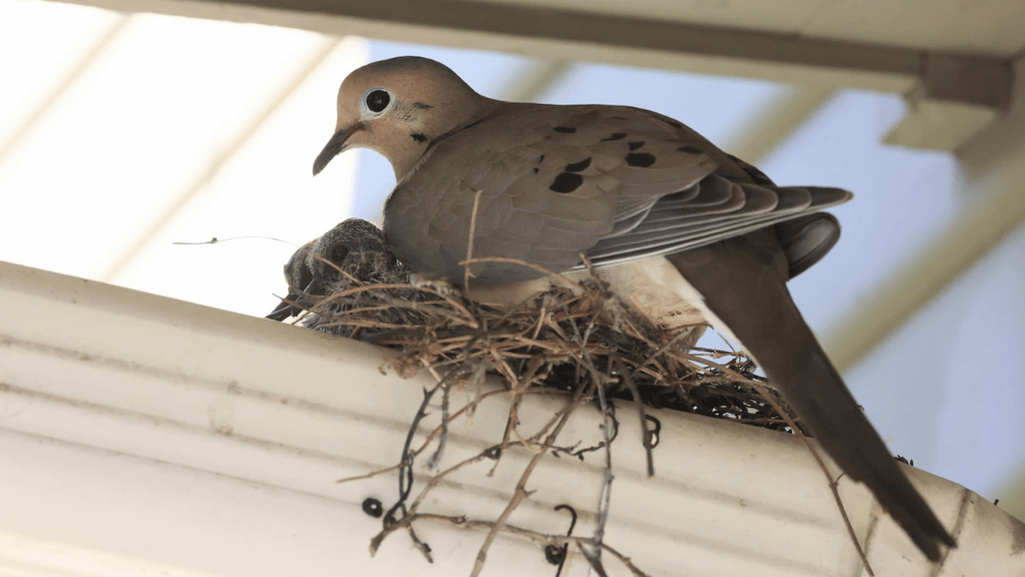 Mourning doves are opportunistic and fast nesters, often assembling a simple nest in a matter of hours or a few days. Their quick-building strategy lets them start breeding soon after securing a suitable site.
Mourning doves are opportunistic and fast nesters, often assembling a simple nest in a matter of hours or a few days. Their quick-building strategy lets them start breeding soon after securing a suitable site.
Nest Construction and Placement
Nests are loosely constructed platforms of twigs and stems. Females typically lay two smooth, white eggs shortly after the nest is complete. Nests are placed in a wide variety of locations: trees and shrubs are common, but pairs will also use man-made structures such as porch ledges, flower pots, or even the backs of air‑conditioning units when suitable ledges are available.
Breeding Season and Frequency
Breeding extends broadly through spring and summer (commonly March through October in much of their range), and frequency of nesting depends on local climate and food availability. In warmer, productive regions, pairs may attempt multiple broods each year (several broods are possible), while birds in cooler areas usually raise fewer broods.
Parental Care and Crop Milk
Both parents share incubation duties, with incubation lasting about 14–15 days on average. After hatching, parents feed the nestlings a nutrient-rich “crop milk” (sometimes called pigeon milk) produced in the adult’s crop; this sustains the squabs during their first days. Young typically fledge the nest at about 12–14 days of age, though they may continue to be fed by parents for a short period after leaving the nest.
Nesting Timeline Typical Detail
Nest Construction Time Hours to 2–4 days (site-dependent)
Eggs per Clutch 2
Incubation Period 14–15 days (shared by both parents)
Broods per Season Varies by region (commonly 2–5 in warmer areas)
Nestling Period 12–14 days before fledging
Practical note for homeowners: if you find a mourning dove nest on your property, avoid moving or disturbing it. Giving nesting pairs space and keeping pets away increases nest success. For researchers or birders, photographing from a distance or using a zoom lens minimizes disturbance while allowing documentation.
Diet and Feeding Patterns
Mourning doves are primarily seed eaters and are most often seen feeding on the ground where seeds accumulate. Their simple, granivorous diet and calm foraging behavior make them a familiar sight at farms, parks, and backyard feeding stations.
Mourning doves eat mostly small seeds from grasses, weeds, flowers, and agricultural grains. Common foods include cracked corn, millet, sorghum, and mixed bird seed blends; they will also take sunflower kernels and other shelled seeds when available. Because they feed on the ground, platform or tray feeders placed low to the ground are ideal for attracting them.
Water and desert tolerance
These doves drink by suction, taking water without tilting their heads back — a drinking method that allows quick, efficient hydration. This ability helps them persist in arid regions where water may be scarce; some individuals can tolerate slightly brackish sources when needed, though fresh water is best.
Social feeding behavior and feeder tips
Mourning doves are generally peaceful at feeders and often feed in loose groups. To attract them, use a large, open platform feeder or a wide tray with 1–2 inches of seed depth so multiple birds can feed comfortably. Place feeders in open areas with nearby perches and minimal ground cover so the birds can watch for predators.
Daily intake and storage
Reported daily food intake varies with season and activity but commonly falls in the range of roughly 12–20% of body weight; energy needs for an average adult are often estimated around 70 kcal/day. Mourning doves also store seeds in their crop (a throat pouch) to soften and process them — anecdotal records show extremely large seed counts in a crop in rare cases, but typical usage is for short-term holding and transport.
Feeding Characteristic Detail
Daily Food Intake ~12–20% of body weight (varies)
Average Calorie Consumption ~70–75 kcal/day (approx.)
Seed Storage (crop) Temporary storage/softening of seeds
Preferred Feeder Type Low platform or tray feeders
What to avoid: Do not offer salted or moldy seeds, unshelled peanuts, or large chunks of bread — these can be unhealthy or pose choking risks. For best results, provide fresh seed, a shallow water source, and a safe area free from ground predators.
Mourning Dove Conservation Status
Mourning doves are an important species in North American wildlife, and current assessments show they remain widespread despite substantial hunting pressure. Their high reproductive potential and adaptability to human-modified landscapes have helped maintain overall population resilience.
Population Trends
International and national assessments list the mourning dove as a species of Least Concern (IUCN), reflecting a large global population and broad range. Long-term monitoring (e.g., Breeding Bird Survey data) shows regional variation in trends — some areas are stable or increasing, while others show declines. Historical comparisons suggest mourning doves have adapted well to many human-altered habitats, but claims that they are more common now than pre-European times should be treated cautiously and supported with historical ecology research.
Hunting Impact and Regulations
Mourning doves are among the most‑harvested game birds in the United States, and hunting seasons and bag limits are managed by state agencies and federal guidelines to maintain sustainable populations. Strong reproductive output (multiple broods in warm regions) helps offset harvest in many areas, but hunters and wildlife managers rely on ongoing monitoring to set appropriate seasons and limits. For precise, up‑to‑date harvest figures and regulations consult your state wildlife agency or the U.S. Fish and Wildlife Service.
Conservation Efforts
Conservation for mourning doves focuses on habitat protection and management, monitoring population trends, and enforcing regulated hunting to ensure sustainable use. Because mourning doves use a mix of agricultural, suburban, and natural sites, maintaining a mosaic of open habitats, safe nesting sites, and water sources benefits the species. Local conservation groups and government wildlife agencies often provide guidelines for habitat enhancement and research opportunities.
How you can help: provide safe, predator-aware feeding and water sources in your yard, protect nesting sites (avoid disturbing nests), support habitat-friendly land use, and follow local hunting regulations. For regional trend details and management plans, reference IUCN assessments, the North American Breeding Bird Survey, and state wildlife agency reports.
Attracting Mourning Doves to Your Backyard
Mourning Dove feeder for backyard birding
Backyard birdwatching is especially rewarding when mourning doves visit; they are common across North America and are easy to attract with the right setup.
Food to offer and feeder setup
Focus on seeds that are easy for ground‑feeding doves to access. Good choices include pre‑shelled sunflower seeds, safflower, cracked corn, millet, and mixed small-seed blends. Because mourning doves feed primarily on the ground, use a low platform or tray feeder placed in an open area so birds can watch for predators while they eat. Keep seed depth to about 1–2 inches so multiple birds can feed comfortably.
Water and shelter
Provide a shallow bird bath or low water source, especially during hot weather; mourning doves appreciate easily accessible water and may visit in pairs. Place water near low perches or small trees so birds can preen and watch for danger. While pairs form long-term bonds in many cases, they are not immune to mate changes—so providing consistent water and food helps attract and retain birds.
Nesting encouragement and safety
Mourning doves nest in a variety of sites, including trees, shrubs, porch ledges, and sometimes on the ground. Installing simple nesting shelves or leaving low shrubs and small trees undisturbed can encourage nesting. Keep pets and frequent human disturbance away from nest sites to improve success.
Recommended Foods Foods to Avoid
Pre‑shelled sunflower seeds Unshelled peanuts (choking risk)
Safflower seeds Salted or flavored seeds/nuts
Cracked corn Large pieces of bread (low nutrition)
Millet and small grains Moldy or damp seed
By offering fresh seed, a shallow water source, safe perches (trees or low posts), and a low platform feeder, you’ll create attractive sites that mourning doves will visit regularly. For best results, place feeders in open yards or edges where doves typically forage.
Photo note: include a setup photo showing a low platform feeder with seed and a shallow bath nearby to illustrate an ideal backyard site.
Interesting Facts About Mourning Doves
Mourning doves are full of surprising traits — from impressive flight to unusual feeding adaptations — that make them one of North America’s most recognizable dove species. Below are several notable facts and cultural notes worth remembering.
Records & natural history
These birds are roughly a foot long (around 11–13 inches) with a wingspan noticeably longer than many backyard birds; in flight their long, pointed tail and white outer tail edges are distinctive. Mourning doves can reach fast flight speeds (commonly cited up to about 55 mph in short bursts) and are strong, direct fliers. Their diet is overwhelmingly seed‑based, and they are capable of consuming a large amount of seed relative to body mass when needed.
Some often‑quoted numeric facts (vary by source): in many situations daily intake is estimated in a broad range roughly 12–20% of body weight; daily energy needs are often put near ~70 kcal for an average adult; and while anecdotal records exist of very large seed counts found in a crop, typical crop use is for short‑term holding and transport rather than extreme storage.
Reproduction & longevity
Mourning doves typically lay two eggs per clutch, and pairs in warm, food‑rich areas can raise several broods each year. While many pairs form long‑term bonds and remain together across seasons, “mate for life” should be used cautiously — pair bonds are strong but not unbreakable. Average wild lifespans are short (many individuals live only a few years), but the species’ potential longevity is demonstrated by band‑recorded individuals that have reached multiple decades.
Characteristic Note
Flight Speed Up to ~55 mph (short bursts)
Daily Seed Consumption ~12–20% of body weight (varies)
Water Intake Drink by suction; can hydrate quickly
Average Lifespan Short average life in wild; record individuals live decades
Diet Composition ~99% seeds (grasses, weeds, grains)
Cultural significance and symbolism
The mourning dove’s gentle coo and calm presence have made it a symbol of peace, love, and fidelity in many cultures. It appears in Christian imagery, Native American traditions, and popular culture as a messenger of solace and hope. In literature and music, the dove often represents comfort after loss; for example, references to white‑winged doves or similar imagery appear in songs and poetry as a motif for peace and renewal.
Photo note: include a flight-in-flight photo showing the white tail edges and wing spots, and a close-up of plumage to help readers recognize tail shape, feathers, and spots.
Conclusion
The mourning dove remains one of North America’s most familiar and valued birds, showing how well some species adapt to human-altered landscapes. While population trends vary regionally, the species’ wide range, rapid reproductive potential, and tolerance for a variety of habitats have kept it broadly common across many areas.
Regional trends and conservation needs
Population monitoring shows that some management units and regions are stable or increasing, while others have experienced declines. These regional differences underscore the need for targeted conservation and habitat management. Local studies (state wildlife agencies and the Breeding Bird Survey) provide the best detail on trends in your area.
How you can help
Simple actions help mourning doves thrive: provide fresh water in a shallow bath, offer appropriate seed at a low platform feeder, protect nest sites by limiting disturbance, and support local habitat conservation efforts. If you hunt, follow local regulations and best practices to ensure sustainable use of the species.
Final thought
Mourning doves connect people to the natural world through sound and sight. Whether you’re a backyard birder, a land manager, or simply someone who enjoys their soft cooing, supporting healthy habitats will help ensure these birds remain part of our landscapes.
FAQ
What is the scientific name and classification of the Mourning Dove?
The Mourning Dove is in the family Columbidae; its scientific name is Zenaida macroura.
Where are Mourning Doves found?
Mourning doves occur from southern Canada through the United States into Mexico, with some populations extending into parts of Central America and the West Indies. Many northern birds migrate south for winter.
Why are Mourning Doves significant in American wildlife?
They are ecologically important seed eaters that occupy many open and edge habitats. They are also a commonly harvested game species, so their management links recreation and conservation.
What are some distinctive physical characteristics of Mourning Doves?
Look for a plump body, long pointed tail with white outer edges, subtle brown/buffy plumage with black wing spots, a small head, short legs, and a thin dark bill.
What is the distinctive sound made by Mourning Doves?
The species produces a soft, mournful coo primarily by males during courtship; you may also hear a wing-produced whistle when birds flush into flight.
How do Mourning Doves adapt to different habitats?
They favor open or semi-open areas (fields, farms, parks, suburban yards) and are able to drink by suction, which helps them in arid places; some populations remain year‑round while others migrate seasonally for winter.
How do Mourning Doves construct their nests and care for their young?
Nests are simple platforms of twigs placed in trees, shrubs, or on man-made structures. Females usually lay two eggs per clutch; both parents incubate, and feed young with nutrient-rich “crop milk” for the first days. Young typically fledge about 12–14 days after hatching.
What do Mourning Doves typically eat?
They feed mainly on seeds from grasses, weeds, and grains, often foraging on the ground or at low platform feeders.
What conservation efforts are in place for Mourning Doves?
Management includes monitoring (Breeding Bird Survey, state agencies), regulated hunting seasons and limits, and habitat conservation. Local programs often recommend habitat improvements and best practices for sustainable use.
How can you attract Mourning Doves to your backyard?
Use low platform or tray feeders filled with millet, cracked corn, safflower, or pre‑shelled sunflower; provide shallow, clean water; and leave low shrubs or nesting shelves for shelter and nesting.
What unique behaviors or abilities do Mourning Doves exhibit?
They can fly quickly with direct flight (short bursts up to ~55 mph reported), make a wing whistle when flushing, ingest and store seeds in a crop, and drink by suction without tilting the head back.
What cultural significance or symbolism is associated with Mourning Doves?
Mourning doves symbolize peace, love, loyalty, and consolation in many cultures and traditions; their gentle coo and presence in urban and rural areas have made them enduring symbols in art, music, and spiritual contexts.



